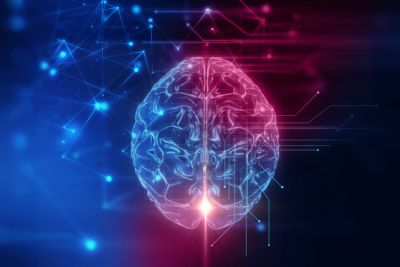 Speculative fiction has repeatedly asked the question of whether the human consciousness can live on after death in this plane of existence. Technological aids for extending life, as well as the potential consequences of their use, have been depicted in Star Trek and Doctor Who episodes, the popular Mass Effect video game series, and novels such as Mirror Project by Michael Scott Monje, Jr. Although the possibility of a human mind living on inside a computer seems somewhat farfetched, theories have been proposed for innovations that could house our memories and mental capacities.
Speculative fiction has repeatedly asked the question of whether the human consciousness can live on after death in this plane of existence. Technological aids for extending life, as well as the potential consequences of their use, have been depicted in Star Trek and Doctor Who episodes, the popular Mass Effect video game series, and novels such as Mirror Project by Michael Scott Monje, Jr. Although the possibility of a human mind living on inside a computer seems somewhat farfetched, theories have been proposed for innovations that could house our memories and mental capacities.
Artificial Brains and the Complexity of Human Minds
Capacity and functionality are two major questions facing scientists who examine technological methods of housing our mental abilities. Writer Jeremy Hsu of the Institute of Electrical and Electronics Engineers’ Spectrum magazine reported that the human brain performs around 30 times faster than the best supercomputers, as discovered by the AI Impacts project. Processing power is expressed in traversed edges per second (TPES), a measure of how fast a computer can move information around within its own systems. It’s also the best equivalent to indicating the speed at which the brain’s neurological pathways generate electrical signals. The current world record is held by IBM’s Sequoia supercomputer, performing at around 23.7 billion TEPS. In contrast, AI Impacts estimates that the human brain operates at between 18 and 640 trillion TEPS.
Given the astounding amount of power that an artificial brain needs to match the capabilities of its flesh-and-blood counterpart, is the construction of one even possible? The Telegraph disclosed that Dr. Hannah Critchlow, a neuroscientist at the United Kingdom’s University of Cambridge, believes it can be done. During a presentation at the 2015 Hay Festival, she explicated how recreating the brain’s 100 trillion circuit connections could facilitate the human-machine cognitive leap and make life in an artificial brain construct possible. Nevertheless, as the researchers at the AI Impacts project demonstrated from their findings, we are still far away from making that a reality.
Transhumanism, Human AI and Life Extension
Some proponents of transhumanism, a movement that advocates technology to overcome human limitations in mortality, body functionality and intelligence, are excited about “mind uploading.” Simply put, it’s a whole brain emulation (WBE) method that would scan a person’s original mental state, copy it exactly and then allow it to operate as a simulation with complete self-awareness and consciousness. This concept is heavily promoted by people like Ray Kurzweil, a prominent computer scientist and inventor. The Guardian contributor Mark O’Connell revealed that Kurzweil explains the idea of mind uploading in his 2006 book “The Singularity Is Near,” and some hope to make WBE a reality as soon as 2045.
Even so, ethical and philosophical questions arise. Can a being with an emulated mind be regarded in the same manner as the original person, as the emulation is a copy of his or her original consciousness? Does such a creation even possess consciousness, a soul or a spirit? Would the simulation have the same legal rights and personhood as biological humans? In terms of religious beliefs, would a deity hear the prayers of an emulated human or artificial intelligence? These, and other interrogatives, continue to be posed as the issues of artificial life and uploaded minds are considered.
Will Life End With Our Physical Bodies?
“We live, we die, and death not ends it,” Jim Morrison once mused in one of his poems. Indeed, human beings have desired to live beyond the ends of their physical bodies since the beginning of time. Whether it’s hope in an afterlife, reincarnation or living on as artificial intelligences, humans indomitably seek to solve what appears to be the impossible problem of death.
Add Your Comment